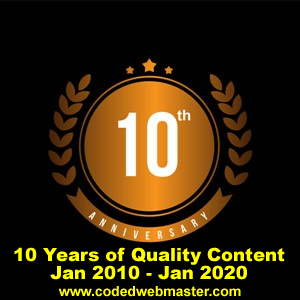 How far content marketing has come over the last several years is mind-boggling. To help sales and development teams, content marketers have improved their skills. There is, of course, ample scope.
How far content marketing has come over the last several years is mind-boggling. To help sales and development teams, content marketers have improved their skills. There is, of course, ample scope.
Intent-based content will be the next big issue for content marketers. Some marketers are currently using customer intent components, while others are still unsure how to use this opportunity.
Taking your content to another dimension can be achieved by focusing on client intent and making your creative process more efficient.
What Exactly Is Intent-Based Content Creation?
Targeting clients based on their intent is a step up from using demographics. Instead of focusing on demographics like age, gender, geography, and household income as a way to narrow your target audience, businesses should focus on the kind of customers most likely to make a purchase.
With the use of Google’s insights, it has been proven that marketers need content that focuses on intent rather than demographics. The following are some of the study’s most noteworthy findings:
Marketers who rely entirely on demographics to target their customers run the risk of missing out on 70% of mobile shoppers. Most smartphone users have made purchases from a company other than the one they had originally planned because the company’s website contained all the information they required.
Certain gender distinctions can be missed by demographic-based advertisements as well. Women account for nearly half of all internet consumers of athletic goods and home improvement information. Demographics-focused brands are missing out on sales potential.
There’s little doubt that intent-based marketing isn’t going to replace demographic targeting. When it comes to developing content, strategic marketers will use a demographic and intent-based hybrid methodology.
Using analytics and traffic data, for instance, you can figure out what your website visitors desire and then utilize data based on demographics to figure out where your consumers are in the purchasing process itself. The combination of these two components increases the likelihood of a successful outcome for the user.
Simply expanding their current content strategy beyond demographic targeting is all that is required for most marketers to embrace intent-based content marketing.
What is the significance of Intent-Based Content Marketing, and why should you care?
Intent-based marketing can be time-consuming for some marketers, and they may wonder if it’s worth it. We, on the other hand, believe that this effort will become standard practice in the field of content marketing within a few years.
You Can Already Find It on Google and Other Search Engines
Prioritizing intent-based content in search engine results and altering algorithms to give readers exactly what they want has been a trend since 2015.
With Google’s AI update, search optimization is now intent-based instead of keyword-based. The purpose of this algorithm revision is to better comprehend difficult inquiries and ascertain what the intended audience desires. In the same way that computers can find out what your customer wants, so can you.
LSI keywords and behavioral learning algorithms power today’s search engines, which enhance the quality and relevance of search results compared to the glitchy ones of the past.
“Thai restaurant near me” and “the best nail salon” are true expressions of inquiries people ask. In the first case, individuals are expressing their desire for a coconut curry dish that is within a few miles of their location. Marketers need to catch up and generate content that both customers and Google are interested in, now that search engines have figured this out.
Customers are pushed down the sales funnel via content
Customer behavior is important even if your brand doesn’t prioritize SEO. Modern customers are well-informed before they even contact your firm, and they will go elsewhere if they can’t find the information they need on your website.
After conducting extensive research, most buyers are already halfway through the purchasing process before they even speak with a sales representative from the seller. When they first come into contact with you, they already have an idea of what they want. For data gathering, direct vendor contact is no longer necessary as much of that work has already taken place online and off.
Content and web presence are where you come in. Providing customers with information about your business and procedure before they ever contact you as a possible lead moves them through the sales funnel.
Customers are more likely to make a purchase when you create content with them in mind.
Instead of only driving traffic and links, content marketing is now helping the sales team generate new prospects and increase conversions.
In the eyes of the experts, this move is making a difference and producing positive effects. For example, a content marketing manager analyzed the material they produced over a year to see which pieces generated the most traffic and conversions, for instance.
Traffic was driven to their pages by articles that used targeted keywords and substantial advertisements. Pages that were designed with a specific goal in mind, however, generated the highest conversions.
Your clients will thank you by converting more frequently if you focus on their needs and desires in your content.
SEO gains a human touch
If you don’t remember your customers’ opinions and ideas, it’s easy to lose sight of the fact that real people read and interact with your content. By taking a step back from the technical aspects of search engine optimization, you can develop content that truly shines.
SEO is a good thing, with the right keywords, metadata, landing page, and call to action. Content, on the other hand, encourages visitors to engage, subscribe, and eventually become customers since it reveals the brand’s human side.
You don’t need an editorial crew to create content with a specific goal in mind. To be successful, your writers, SEO professionals, managers, and sales team must all be involved in the marketing process.
How to Create a Product That Customers Want to Own?
One of the exciting news is that you may already be developing content depending on your intended audience’s intent. It’s possible that your team only needs to go the extra mile to develop a clear approach that yields results. Set Specific Objectives and Target Audiences. To please everyone every time is impossible.
Always keep in mind that you’re not writing for every one of your readers. To rank effectively, each piece of content should be tailored to a certain target.
Before they start developing content, brands that are successful address questions about their target demographic, sales funnel position, general goals, and next steps that may be taken. A piece’s whole focus by the time it’s written and published has shifted to that single point in time.
Investigate the Buying Process and the Customer Journey
You must begin by gaining a thorough understanding of your target audience and their desired outcome(s). Understanding their path is the next stage. Before making a purchase, what are they thinking about? What is it that they require for which you have a remedy?
For the most part, searches fall into one of three categories:
Navigation: A specific brand is on the mind of the searcher.
Information: The user wants to know more about a product or service that they are considering purchasing.
Transaction: The user intends to buy something or is ready to begin the process of doing so.
If you are looking for information, don’t provide transactional data. Additionally, failure to capitalize on a customer’s intent to buy might result in a decrease in rankings and sales.
Try typing the query into Google and see if you can figure out what the user intends to do with the information returned based on their keywords. Be aware that certain inquiries have numerous levels of user intent and you may need to modify your content accordingly.
A change in keyword targeting or approach is probably in order if your current material isn’t getting the results you expect.
Focus on Why, not What
Take a step back and focus on the buyer if you find intent-based marketing confusing. To put it simply, “Ask why not what” is the credo of intent-based marketing.
In the past, marketers have tended to look at things from the perspective of the customer. Businesses can gain a better understanding of their customers’ motivations by answering the “why” question first.
Ask clients why they need some products and then work backward to discover how they utilize them and what precisely solves their problems before deciding what products to market.
Build Concepts Around Moments of Pre-Intent
Develop ideas and content based on intent once you’ve figured out what your customers want and need to know.
Promote the use of pre-intent moments by marketers. It’s important to think about the moments that make people say, “I want to buy.” Consider the case of someone who is planning on taking scuba training in preparation for a future vacation or simply wants to spend more time on the water this summer.
Customers are more likely to contact a business if they see literature about the process of registering for a scuba certification in the lead-up to the purchase.
Look at Customer Intention in the Long Term
The customers you’re trying to reach now may look very different in a few years. You can maintain your content strategy current and relevant by regularly updating and analyzing your demographics.
A real-world scenario is used to describe the actions and motivations of the user. An individual with a history of dieting may have tried going to the gym a few times before giving up. A new engagement and the desire to fit into a wedding gown, on the other hand, can spur the same person to make a lifestyle change and sign up for personal training.
Even though your customers have acted in a specific way in the past, this does not guarantee that they will continue to do so. You can get ready for these changes in behavior by concentrating on your intent instead of your actions or words.
Using Search Intent in Content Marketing: A Guide
The key to successful content marketing is the creation of high-quality material that is accompanied by the appropriate use of relevant keywords. If you have highly focused and well-optimized traffic, it will be much easier to turn them into paying clients. Keep in mind that visitors expect the best and most relevant results at all times, therefore you must consistently improve and refresh your web copy and site content.
Call-to-Action Prompts
There has been a great deal of time and effort invested in studying the habits and interests of your customers, as well as their interactions with your website. Optimizing your site’s content based on search intent will help you attract visitors who are more likely to convert into customers. Users will now be prompted to take action through a call to action. A variety of call-to-action templates can help you discover which performs better for your organization.
An effective lead magnet can help an internet business generate more sales leads in the future. As a part of your call to action, you must convey urgency to your customers. By giving them access to your resources for a limited time or encouraging them to sign up for your newsletter before it comes out in X days.
Where the Right Customer Meets the Right Time in the World of Search
Since the dawn of time, marketers have exploited demographic data such as income and gender to identify potential clients. However, as marketing methods have evolved, they’ve grown to target clients in smaller groups where they are more likely to take action.
Because you’re attracting folks who are wanting to perform certain actions, online marketing and search intent have a lot of possibilities. Positioning your organization to provide customers with the information they want will have a significant influence on your business.
Conclusion
It is important to know where your customers are looking for information and make yourself visible there. It’s important to base your outreach and publication strategy on where your customers go for solutions, not where you believe you’ll seem the best.
Content that is high-quality, relevant, and SEO-friendly is excellent, but it isn’t enough on its own and makes use of a content writing company in Bangalore. Choosing the correct publisher is just as important as writing the book you want to publish.






